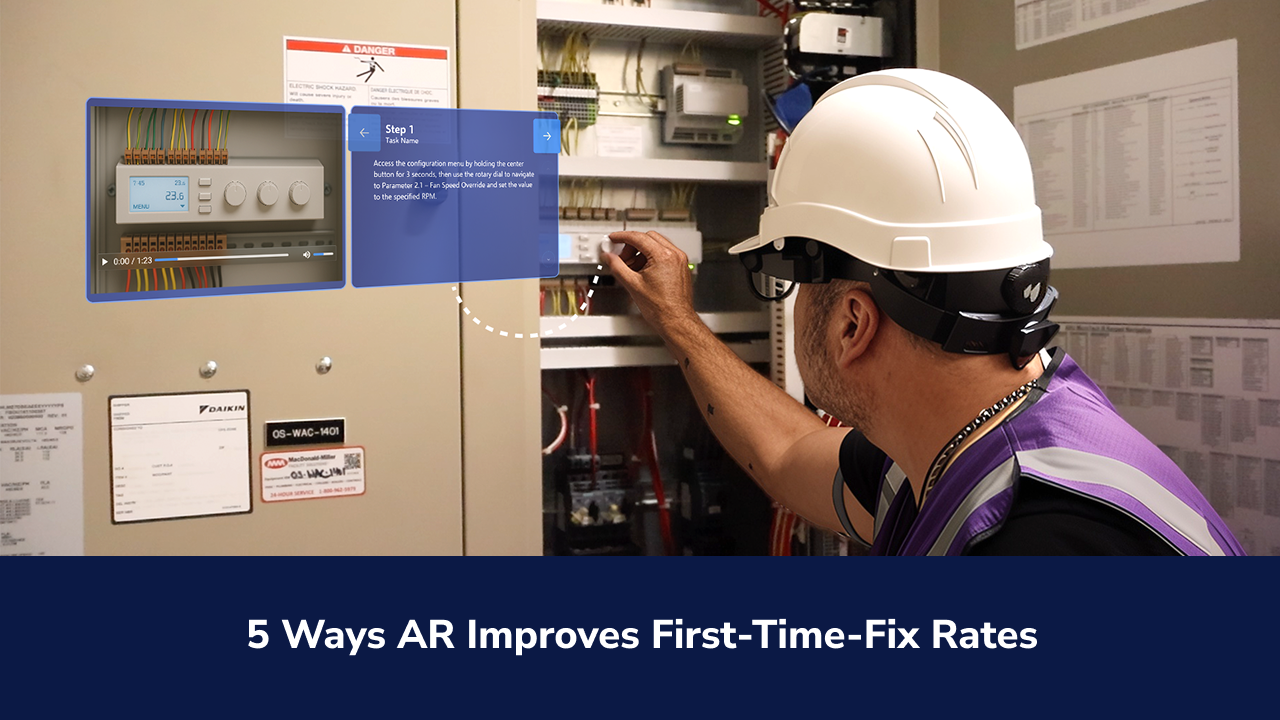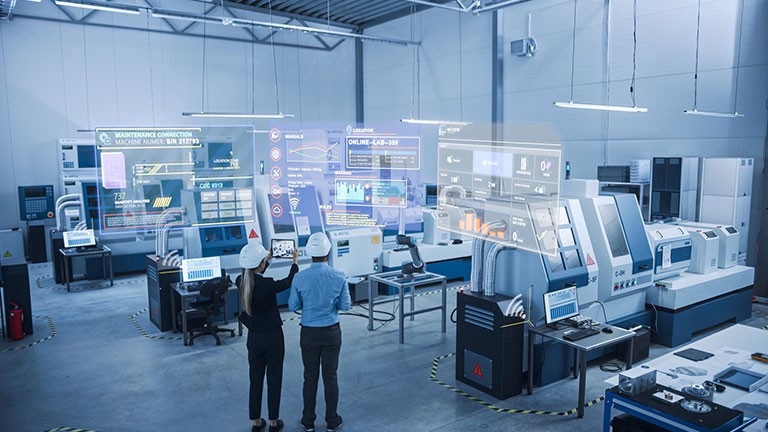
First‑Time‑Fix Rate (FTFR) is the percentage of jobs resolved on the first visit. Raising FTFR reduces repeat truck rolls, rework, and Mean-Time-To-Repair (MTTR). These are direct ROI drivers for field service and plant maintenance.
Below are five proven ways that AR step-by-step guidance (interactive SOPs delivered on head-mounted displays and mobile devices) improves FTFR, accompanied by metrics to track.
1) Eliminate ambiguity with spatial, step‑by‑step instructions
What it is: Instead of a PDF or tribal notes, technicians see anchored, in‑context steps and 3D callouts on the exact component—hands‑free on HMDs or touch on mobile.

Why it raises FTFR: Studies of AR work instructions in assembly/repair consistently show lower error rates, faster task times, and reduced cognitive load. SpringerLink+2ScienceDirect+2
What to measure:
- Step error rate and rework rate
- Time‑to‑complete (by step, by job)
- “Procedural clarifications” per job (a proxy for ambiguity)
2) Build a remote‑expert safety net into every procedure
What it is: One‑tap troubleshooting on a live video call with mixed‑reality annotations so an expert can literally point at the right part.

Why it raises FTFR: When the path isn’t obvious, remote collaboration on the job prevents second visits.
What to measure:
- Escalation rate and duration
- % escalations resolved without a site revisit
- Travel avoided per incident (time/cost)
3) Put the right knowledge at the right moment (co‑browse, parts, and records)
What it is: In‑procedure access to manuals, parts catalogs, drawings, and prior work orders—shared so everyone sees the same page.
Why it raises FTFR: Fewer “missing info” stalls. Forrester’s Total Economic Impact on modernized service (Microsoft) highlights increased FTFR when technicians have integrated digital information at the point of work. Microsoft
What to measure:
- Time lost to information lookups
- “Part not available / info not found” as a cause code
- First‑visit parts accuracy
4) Capture evidence and context automatically
What it is: Technicians snap photos or short videos (including MR annotations) and auto‑attach them to the job record—creating traceability without extra admin work.
Why it raises FTFR: Better documentation means fewer repeat visits due to incomplete proof, and faster expert triage when issues recur. It also seeds a knowledge base for future first‑time fixes.
What to measure:
-
% of jobs with complete evidence bundle
-
Repeat‑visit rate due to “insufficient info”
-
Audit pass rate on first submission
5) “Train‑to‑Work”: blend VR practice with AR execution
What it is: Use the same content to practice in VR (safe, repeatable) and then execute in AR (on the real asset). AR/VR instruction cuts errors and accelerates throughput/learnability, which translates into higher FTFR for new or complex tasks.
.png?width=1920&height=1080&name=Frontline%20%26%20VR%20Training%20(1).png)
What to measure:
- Onboarding time to independent work
- FTFR for new hires vs. experienced techs
- Error rate on first‑of‑kind tasks
Where Altoura fits?
Altoura Frontline Procedures – interactive, step‑by‑step AR work instructions
-
Anchored 3D overlays, hands‑free HMD use, and offline mode
-
Real‑time analytics on completion times, FTFR, MTTR
-
No-code Creator platform for building site/plant-specific content
Altoura Remote Expert – the Remote Assist replacement
-
Mixed‑reality annotations, live video, webpage sharing, session capture
-
Cross‑platform: HoloLens, Meta Quest, Android & iOS and upcoming HMDs
-
Integrates with Entra ID (Azure AD), Teams, and Dynamics
Reminder: Microsoft has set Dec 31, 2026 as the end of support for Dynamics 365 Guides and Remote Assist. Microsoft Learn
Plan transitions with a platform that preserves your Microsoft stack and expands device choice. Altoura offers native Microsoft Teams integration and free migration of all D365 Guides content.
You May Also Like
How Altoura Delivers High-Fidelity Spatial Computing
December 01 2020
Visual Fidelity brings focus to Spatial Computing
November 17 2020

.png?width=1366&height=768&name=Blog%20banner%203%20(1).png)

